Under a vast canopy of tents in the Saudi city of Jeddah, religious artifacts are on display alongside contemporary art pieces, part of the kingdom’s bid to transform its ultraconservative image.
The second edition of the Islamic Arts Biennale, titled “And All That Is In Between,” features as its centerpiece segments of the kiswa, the black cloth embroidered with gold and silver that covers the Kaaba, the cubic building towards which all Muslims pray.
Hundreds more works are on display at the west terminal of King Abdulaziz International Airport in the coastal city, including valuable objects on loan from London’s Victoria & Albert Museum and the Louvre in Paris, and rare artefacts from the Vatican Library such as a medieval Quran in Hebrew script.
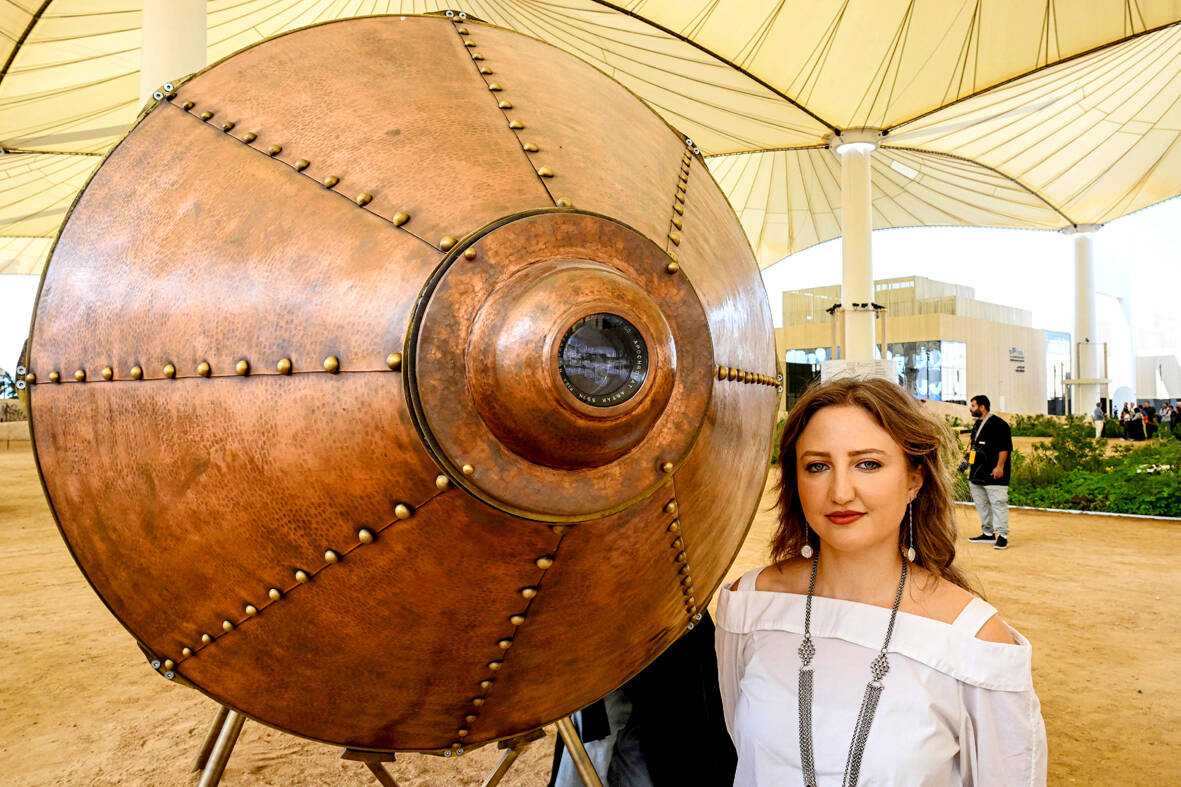
Photo: AFP
“This bringing together of the contemporary and the past really emphasizes the change that Saudi Arabia is going through,” said Saudi artist Muhannad Shono, curator of the exhibition.
Home to Islam’s holiest sites, the kingdom has long been dominated by Wahhabism, a strict interpretation of Islam that prohibits the representation of human and animal figures.
As a result of the prohibition of such depictions in most Sunni Muslim schools of thought, geometric patterns came to be widely prevalent in Islamic art.
But the biennale in Jeddah features medieval Persian illuminations, including royal portraits, as well as a fountain designed by Yemeni-Indonesian artist Anhar Salem whose mosaic tiles, assembled by colour using artificial intelligence, are made up of avatars sourced online.
’TRADITIONAL CONCEPTIONS’
“We have traditional conceptions of Islam and its history, which I feel we should begin to re-examine from a new perspective,” said visitor Abdelelah Qutub, a 31-year-old architect from Mecca.
A few meters away, Franco-Lebanese artist Tamara Kalo had recreated the camera obscura, the precursor to the modern camera invented in the 11th century by Muslim philosopher Ibn al-Haytham (Alhazen).
Kalo said her installation, made out of copper, sought to raise the question of “what it means to see and what it means to be a witness.”
The exhibition has also encouraged artists to be bold with scale, as can be seen from a massive disc covered in petrol — a nod to Saudi Arabia’s position as the world’s leading crude exporter — that spins endlessly.
Its creator, Italian artist Arcangelo Sassolino, said: “For me it represents time... it’s something that keeps evolving while we’re watching the piece.”
Under his “Vision 2030,” de facto Saudi leader Crown Prince Mohammed bin Salman has sought to transform the kingdom’s image, weighed down by decades of repression and ultra-conservatism.
According to James Dorsey of the National University of Singapore, Saudi authorities are seeking to address what he described as a “reputation deficit,” having long been considered a “secretive, ultra-conservative kingdom.”
Efforts to project “openness,” including the biennale, are “key to the success of Vision 2030,” he said.
’SHARE SPACE WITH THE WEST’
Strategically located in a terminal adjacent to the one reserved for Muslims on a pilgrimage to Mecca, the Jeddah biennale attracts a mix of both art enthusiasts and pilgrims.
“We had pilgrims coming from over the road here to see the Mecca and Medina pavilions last time,” said art historian Julian Raby.
The first edition in 2023 attracted 600,000 visitors — approaching the Venice Biennale’s 700,000 visitors last year.
Now, the Islamic Arts Biennale aims to exceed a million visitors, many from abroad.
“That internationalism is exactly the opposite of how many people consider Saudi Arabia. They look at Saudi Arabia and consider it as a cloistered country,” Raby said.
“The Islamic world has never been cloistered, it’s been in dialogue, dynamic.”
In front of her monumental sculpture, a black steel bush of roses floating above a fountain, Jordanian artist Raya Kassisieh was proud to benefit from the platform provided by the biennale.
“We are able and at the level to converse and share space with the West,” she said.
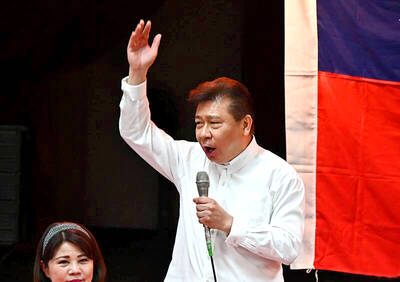
A series of dramatic news items dropped last month that shed light on Chinese Communist Party (CCP) attitudes towards three candidates for last year’s presidential election: Taiwan People’s Party (TPP) founder Ko Wen-je (柯文哲), Terry Gou (郭台銘), founder of Hon Hai Precision Industry Co (鴻海精密), also known as Foxconn Technology Group (富士康科技集團), and New Taipei City Mayor Hou You-yi (侯友宜) of the Chinese Nationalist Party (KMT). It also revealed deep blue support for Ko and Gou from inside the KMT, how they interacted with the CCP and alleged election interference involving NT$100 million (US$3.05 million) or more raised by the
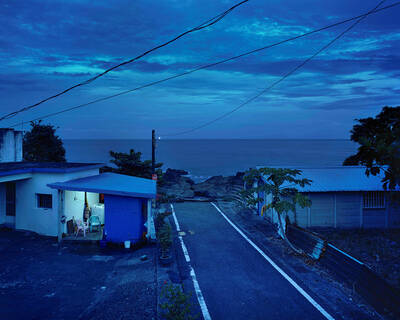
A white horse stark against a black beach. A family pushes a car through floodwaters in Chiayi County. People play on a beach in Pingtung County, as a nuclear power plant looms in the background. These are just some of the powerful images on display as part of Shen Chao-liang’s (沈昭良) Drifting (Overture) exhibition, currently on display at AKI Gallery in Taipei. For the first time in Shen’s decorated career, his photography seeks to speak to broader, multi-layered issues within the fabric of Taiwanese society. The photographs look towards history, national identity, ecological changes and more to create a collection of images
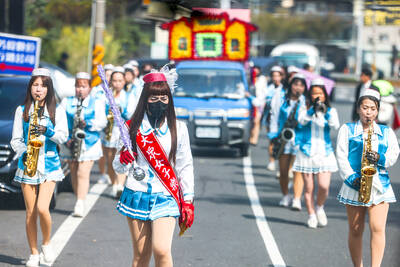
At a funeral in rural Changhua County, musicians wearing pleated mini-skirts and go-go boots march around a coffin to the beat of the 1980s hit I Hate Myself for Loving You. The performance in a rural farming community is a modern mash-up of ancient Chinese funeral rites and folk traditions, with saxophones, rock music and daring outfits. Da Zhong (大眾) women’s group is part of a long tradition of funeral marching bands performing in mostly rural areas of Taiwan for families wanting to give their loved ones an upbeat send-off. The band was composed mainly of men when it started 50
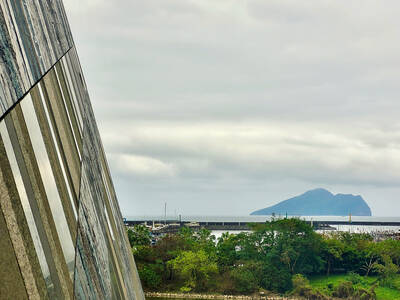
While riding a scooter along the northeast coast in Yilan County a few years ago, I was alarmed to see a building in the distance that appeared to have fallen over, as if toppled by an earthquake. As I got closer, I realized this was intentional. The architects had made this building appear to be jutting out of the Earth, much like a mountain that was forced upward by tectonic activity. This was the Lanyang Museum (蘭陽博物館), which tells the story of Yilan, both its natural environment and cultural heritage. The museum is worth a visit, if only just to get a